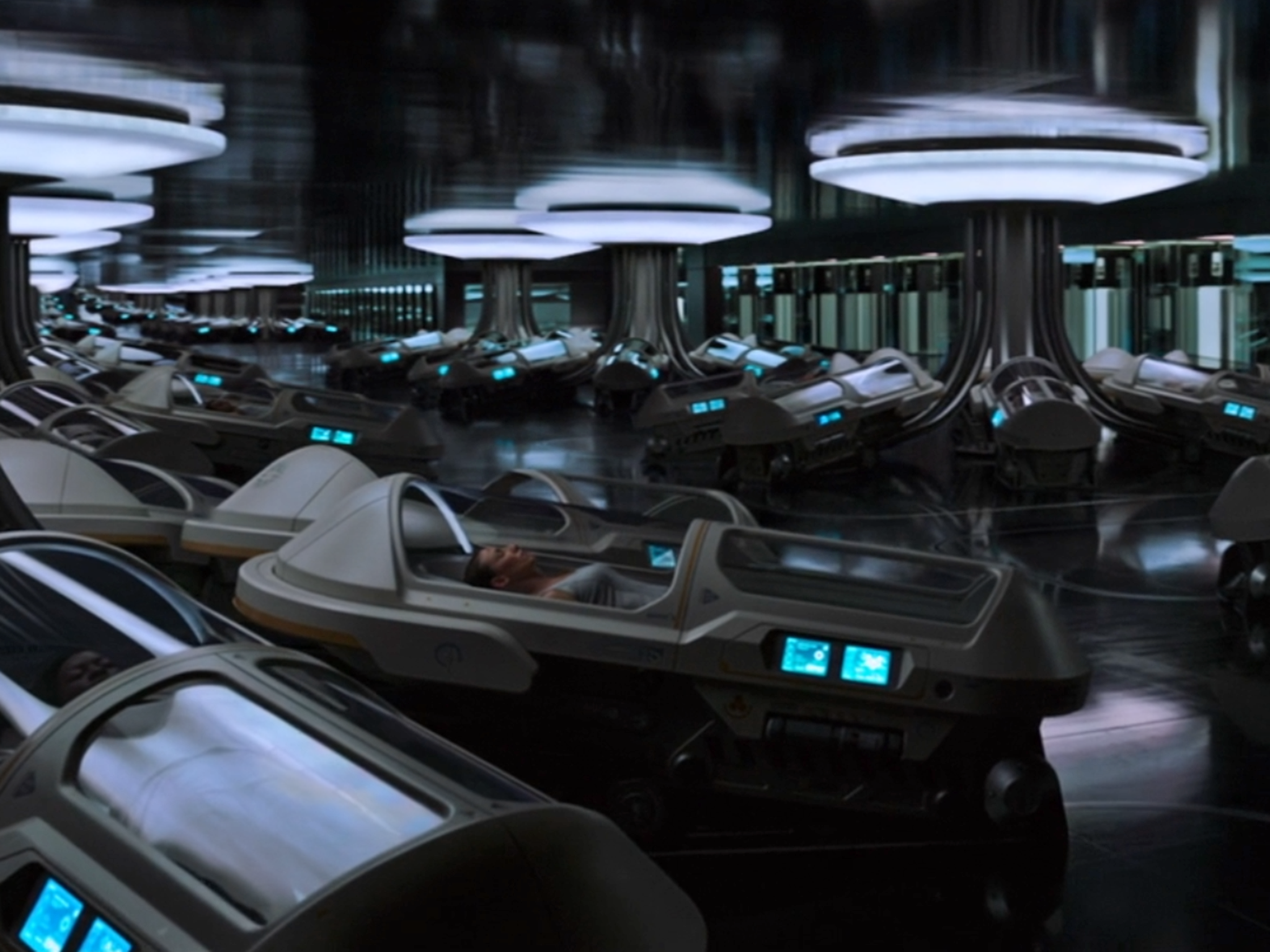Cryosleep: Fact or just science fiction?
From ‘A Space Odyssey’ to ‘Alien’, sci-fi writers have been recycling the idea of hypersleep since the 1950s. But could astronauts really snooze their way to the red planet, asks Steven Cutts


It’s now more than 50 years since Neil Armstrong set foot on the moon. On that day, millions of people assumed that the landing in the Sea of Tranquillity was just the start and that space colonisation was just around the corner. In case you haven’t noticed, we still haven’t conquered the heavens but that doesn’t mean we’ve given up. Even as I write these words, there are scientists all over the world planning our next steps into the solar system and at least some of them are seriously suggesting that we should actually freeze our astronauts for their outward journey.
A few years ago, I decided to delve into the exciting world of sci-fi writing and consciously looked for a unique selling point. Being a man of science myself, I would constrain my characters with the laws of physics. There would be no hyperdrive and no hypersleep. At first sight, this is a great selling point but when you sit down and start to type, you start to see the flaws in this position.
Unless someone invents some sort of magical new rocket engine, it’s going to take between six and seven months to reach Mars and our astronauts will have to spend each and every one of them locked up in the same can.
If you want to convey this to your readers, you have to slow things down a lot. For example: “127 days into our voyage, we’re still locked in the same can.”
After that comes: “128 days in and we’re in pretty much the same situation.”
How are you going to enthuse your reader to keep reading if the book proceeds at the same pace as a real mission? For a commercially successful novel (and even more so for a movie) we need to get our astronauts out of the spaceship and down onto the red planet, pronto.
As long ago as the 1950s, sci-fi writers started to imagine a future where astronauts would be asleep for the bulk of their journey. Let’s face it, plenty of bears manage to do this every winter and it doesn’t seem to do them any harm. Given that humans and bears share more than 90 per cent of their DNA, adapting humans for deep space travel shouldn’t be too hard, right?
Other writers drew inspiration from real advances in medicine. In the 1950s some bright spark came up with a new idea for open-heart surgery. In order to operate on the organ, a surgeon has to stop it beating. Since people usually die within seven minutes of their heart stopping, no procedure can be performed on the heart that takes longer than seven minutes. Allowing for stopping and restart, you’d be lucky for five clear minutes of operating time. Then, one day, doctors thought of a solution. Once the patient was asleep, they could be placed in a bath of ice and put into a hypothermic state that would extend the period in which the heart could stop, thus allowing for more complex operations.

A few years later, we invented the heart-lung bypass machine, which enabled us to keep patients alive in the operating theatre without hypothermia and in time, open-heart surgery became routine. But for the science fiction writers of this world, this was much too late. They had already picked up on the original story and started to write: “inspired by the technique of hypothermia in heart surgery, our scientists figured out how to keep people on ice for longer and longer…” Long enough, perhaps, to get to Mars.
Plenty of bears hibernate every winter. Given that humans and bears share more than 90 per cent of their DNA, adapting humans for deep space travel shouldn’t be too hard, right?
In an effort to make the story sound credible, the characters typically receive a special injection before they doze off, sometimes referred to as “anti-freeze”. By the time of Stanley Kubrick’s 2001: A Space Odyssey, freezing astronauts for long-duration missions was de rigueur and the idea was successfully recycled in Alien, Avatar and Interstellar to name but a few.
Eventually, sci-fi buffs got so familiar with this concept that it would have seemed odd to see a movie where the astronauts are still awake in the opening scene. But aside from the world of geeky science fiction, could we ever really put people into a deep sleep? Suspended animation is another popular term for this – as yet – completely impossible phenomenon.
Bears can do it and so can quite a few other species, such as squirrels. During the winter, their body temperature falls by several degrees, as does their heart rate. The metabolic rate of a bear in hibernation has been shown to fall by as much as 75 per cent, although the animal would still be expected to show weight loss during that time (as would a human, if we can ever figure out how to do it). Come spring, they manage to rouse themselves and return to normal duties.

Over the years, many researchers have looked for chemicals in bear’s blood that might enable us to induce a similar physiological state in humans, thus far without success. There are many differences between bear and human physiology and biochemistry. Many of our enzymes are completely different and just a few degrees of body temperature change will cause them to denature. The idea that we could somehow inject ourselves with one single chemical and thus induce an extended period of sleep is largely nonsense.
When you look at a field like deep space hibernation, it’s important to distinguish between fantasy, blue sky thinking and hard data. A few years ago, a young boy was trapped under ice in Germany and only rescued some time later. By all accounts, his heart stopped beating for over an hour and his core body temperature fell dramatically in the freezing water. Incredibly, he survived. More than one science fiction writer has picked up on this story and used it as hard evidence that even an adult human being could survive a protracted period of freezing without damage. If only we could figure out how, we ought to be able to fly to Mars quite easily.
Most sci-fi writers maintain that their frozen astronauts fail to age during the outward journey, an idea explored in the recent movie, Interstellar. People return to their home planet much younger than their peers and the whole thing starts to overlap with that other popular sci-fi subgenre, time travel. Like a bear in his very own cave, the sleeping astronauts consume almost no oxygen or food. Boredom is quickly eliminated from the narrative and the entire story reboots when the refrigeration process ends and our heroes emerge from sleep.
When you look at a field like deep space hibernation, it’s important to distinguish between fantasy, blue sky thinking and hard data
But there are other more practical issues at stake. A mission to Mars, or indeed a more distant planet, is likely to take at least 18 months. Quite apart from the mental health of the astronauts, the logistical challenge of keeping several people alive for that time is considerable. Food, water and oxygen can all be recycled but the technology is still in its infancy and if any of it should fail, our heroes will presumably either starve or asphyxiate, whichever comes first.
One of the few reasons for optimism on the issue of interplanetary travel is the modest increases in speed that new technology may bring. By miniaturising computers and replacing electrical cables with fibre optics, we might be able to cut the launch weight of a Mars-bound spacecraft by quite a chunk, thus also cutting the journey time from seven to six months. Even this rather modest achievement makes the logistical challenge easier to swallow.

But there’s worse to come. Once in deep space, our astronauts will experience considerable muscle and bone mass loss. By the time they arrive on the surface of Mars, there’s a significant chance that simply standing in the 40 per cent gravity could break, say, their femur.
Nevertheless, several attempts to study the effects of hypothermic sleep are now underway. Both Nasa and the European Space Agency (ESA) have commissioned studies in this field, demonstrating – perhaps predictably – that Arthur C Clarke and Stanley Kubrick had a point: putting people to sleep during long-duration spaceflight saves on resources.
A recent ESA review of deep sleep in space travel has concluded that human hibernation would make space travel much cheaper and more realistic. Since the astronauts would barely be conscious for most of their journey it wouldn’t bother them so much that they are trapped in a confined space. Like the sci-fi writers of old, both Nasa and the ESA studies have suggested that astronauts would receive an injection before their sleep period to induce a period of protracted torpor.
Optimistic forecasts for hypothermic sleep suggest that the astronauts would be fed using total parenteral nutrition (TPN). This is already used routinely in intensive care medicine and, on first impressions, doesn’t feel like that big a leap. Once our astronauts are crammed into their coffin-shaped boxes, covering them in a radiation-blocking material will solve one of the other big concerns for interplanetary travel: the radiation dose.
In sharp contrast, a crew of entirely conscious astronauts would demand a much bigger compartment to float around in, which would demand shielding for the entire block. By implication, we wouldn’t have to give them such a spacious environment to exercise, socialise and try not to go mad in. However, if you’re starting to think that the obstacles to deep space travel are simply too great, don’t give up just yet.
When the first explorers started to circumnavigate the world, missions would often take more than 12 months. Sometimes, less than half of the crew would make it back to England. After a few weeks of shore leave, many of them would return to the ship and sign up for the next voyage. There wasn’t a lot of space onboard those ships and yet – somehow – the sailors were able to survive. Even today, single-handed yachtsmen survive on a round-the-world trip without space to stretch their legs or friends for conversation.
When Neil Armstrong first set foot upon the moon, he had only one companion, Buzz Aldrin, who has since suggested that a trip to Mars would be a great opportunity to read War and Peace. He’s probably right. More importantly, we’re likely less than 20 years from the first manned expedition to the red planet. I’d be surprised if hypersleep will be ready by then, but space exploration draws its inspiration from many different disciplines and you can never be sure where the next breakthrough will come from. There have already been some promising discoveries and for the explorers of the future, perhaps those who will come to colonise and reinvent Mars, a few months of hypersleep might just be a part of the journey.
Steve Cutts is a doctor and science writer. His sci-fi novel ‘The Village on Mars’ is available on Amazon
Join our commenting forum
Join thought-provoking conversations, follow other Independent readers and see their replies
Comments